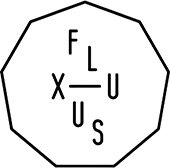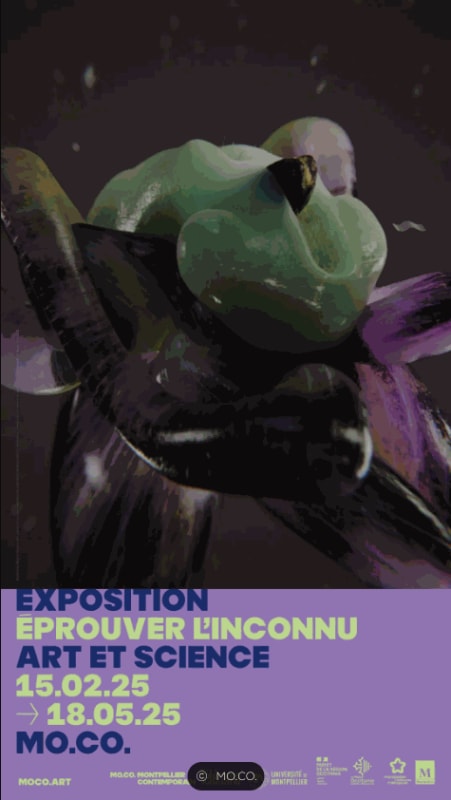After a season dedicated to contemporary figurative painting in France, followed by an exploration of the links between art and literature, MO.CO. Montpellier Contemporain presents this spring three exhibitions across its two art centers, delving into the relationship between art and science. This theme resonates with the history of the city of Montpellier, which has played a major role in education, the dissemination of knowledge, and scientific research.
At MO.CO., Éprouver l’inconnu ("Testing the Unknown") brings together over one hundred works by around thirty artists, creating an open and porous journey across materials, experiments, disciplines, and eras, in order to put reality—or what we know of it—to the test.
In Chaos: Making a New Science (1987), James Gleick reminds us that scientific theories often emerge from the repetition of experiments and the recurrence of an event. An isolated event, in contrast, is typically seen as an error. Yet in the research process, serendipity, accidental discoveries, and the acceptance of randomness open up new paths beyond our predictions. This transition from the known world to the unknown is at the heart of the exhibition.
The artists featured in Éprouver l’inconnu sometimes come from scientific backgrounds, while others have collaborated with scientists or are simply passionate about a particular field. They all share a drive to experiment with the unknown by diverting scientific forms and processes.
Mary Maggic’s biohacking approach humorously hijacks biology, proposing DIY methods to extract estrogen from urine as a way to challenge institutional authority. Candice Lin questions the hegemony of Western scientism, contextualizing knowledge and materials within histories of domination, notably through her kombucha tea fermentation process. Some works produced specifically for the exhibition create bridges between disciplines. For instance, a new installation by Roy Köhnke offers a sensual approach to evolution and interspecies relationships. Morgan Courtois presents a series of sculptures stained with olfactory liquids, evoking sensory portraits and memories of loved ones, subverting techniques used in the pharmaceutical and perfume industries. Joey Holder takes a speculative approach to zoology, imagining an immersive multi-screen installation featuring artificial intelligence that plays with our desires for control and our fears.
For this exhibition, MO.CO. sought to include multiple generations of artists, ranging from Bernard Palissy (16th century) to the emerging international scene (artists born in the 1990s), alongside key figures in contemporary art such as Nam June Paik, Tetsumi Kudo, Kiki Smith, and Alina Szapocznikow. Some artists less associated with contemporary art have also been included, such as Anna Zemánková, Luboš Plný, HR Giger, Victorien Sardou, and Emma Kunz.
Finally, the collections of the University of Montpellier highlight the power of cross-disciplinary knowledge and artistic forms, as well as the historical markers of discovery, concepts, and objects—though even these are sometimes destined for obsolescence.
With Isabelle Andriessen, Art Orienté Objet, Berdaguer & Péjus, Hicham Berrada, Morgan Courtois, HR Giger, Joey Holder, Tishan Hsu, Cooper Jacoby, Yunchul Kim, Josh Kline, Roy Köhnke, Kinke Kooi, Tetsumi Kudo, Emma Kunz, Candice Lin, Pei-Ying Lin, Špela Petrič, Dimitris Stamatis & Jasmina Weiss, Mary Maggic, Guadalupe Maravilla, Nam June Paik, Jean Painlevé, Bernard Palissy, Eduardo Paolozzi, Luboš Plný, Lea Porsager, Josephine Pryde, Victorien Sardou, Jeremy Shaw, Kiki Smith, Alina Szapocznikow, Haena Yoo, Anna Zemánková.
And the scientific collections of the University of Montpellier:
Conservatory of Anatomy, Faculty of Medicine, Faculty of Education: Dr. Louis Auzoux, E. Soumac & Dr. Paul Gilis.
Institute of Botany: anonymous works, Toussaint-François Node-Véran.
As well as loans from the scientific collections of the University of Toulouse III - Paul Sabatier: Dr. A. Zieger in collaboration with Ernst Haeckel.
General curatorship of the Art & Science season: Pauline Faure, Anya Harrison, Alexis Loisel-Montambaux, Deniz Yoruc.
Under the artistic direction of Numa Hambursin.
With the support of Fluxus Art Projects.



